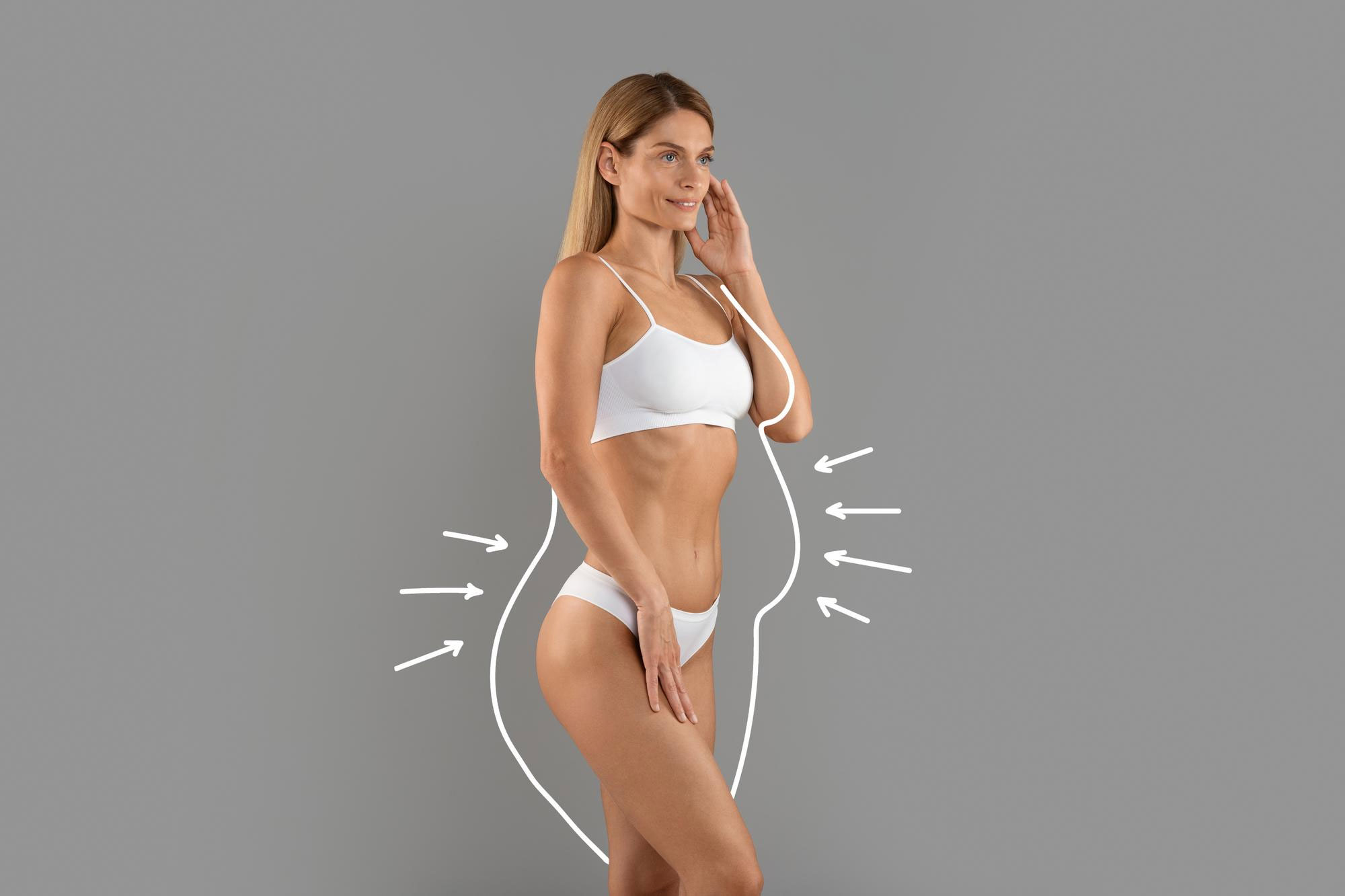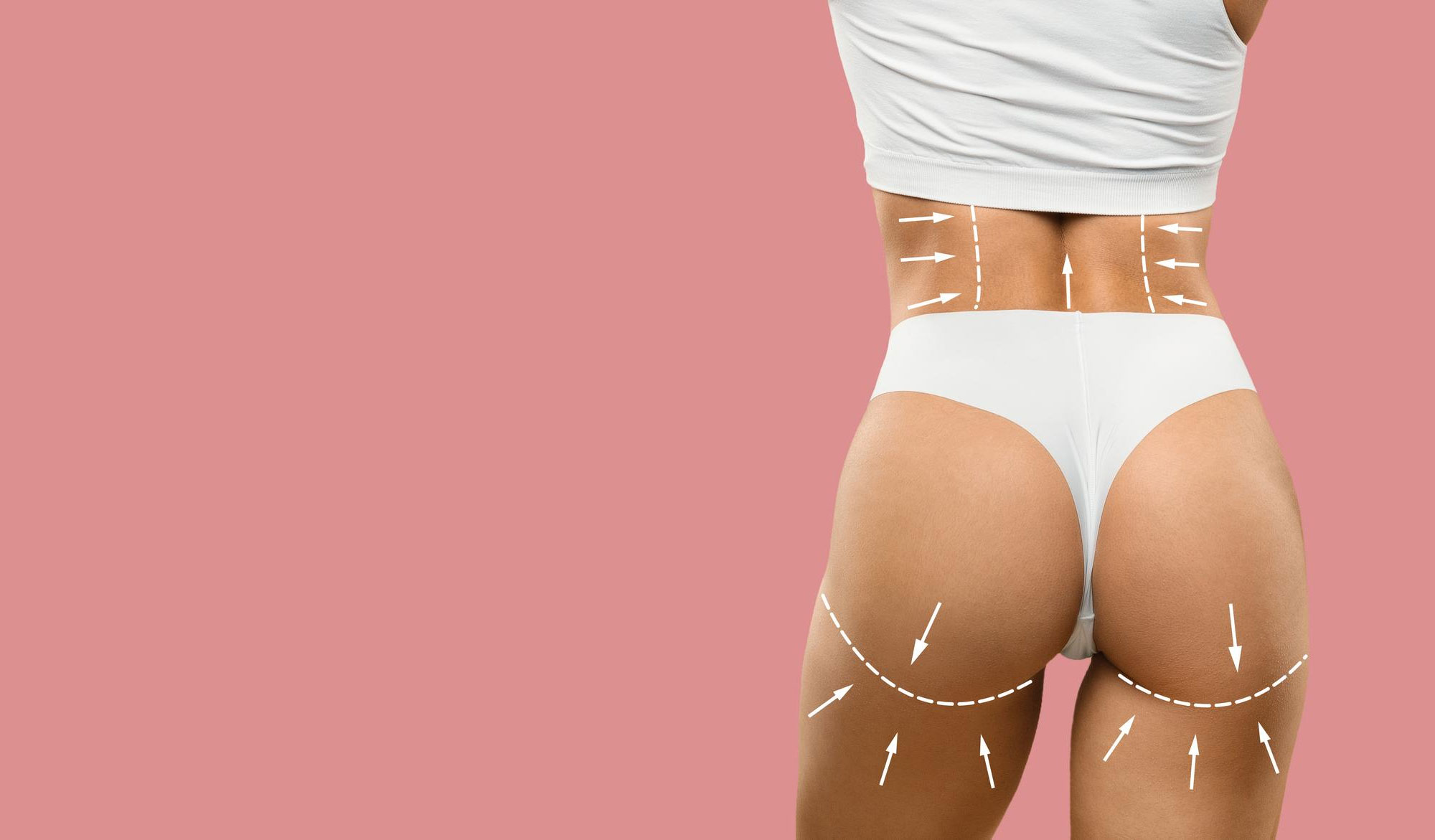What is tummy tuck surgery and why is it performed?
Tummy tuck surgery is a plastic surgery intervention based on the principle of removing excess skin and fat tissue and strengthening the abdominal muscles. Often, "getting rid of excess weight" is confused with tummy tuck surgery. A tummy tuck surgery is not a weight loss method; on the contrary, it is an approach to correct the deformity in the abdominal area.
Sagging Skin and Fat Tissue: After pregnancy, it is common to experience loosening in the belly area due to abdominal muscle separation (diastasis recti). Similarly, excess skin may occur after rapid weight loss. In this case, sports and diet alone may not be enough.
Repair of Muscles: A tummy tuck not only removes excess skin, but also repairs separated or weakened muscles. This repair can also have positive effects on the lower back and posture.
Increased Self-Confidence: Correcting the shape of the abdominal area makes the person feel more comfortable and confident in many areas, from choosing clothes to exercising in daily life.
You can think of this surgery as "strengthening the foundation of your house and then rearranging the walls". Not only the external appearance is restored, but also the underlying muscular system is supported.
Who is a Suitable Candidate for Tummy Tuck Surgery?
Whether tummy tuck surgery is suitable for each individual is based on a number of criteria. The main goal here is to get the maximum benefit from the surgery and to minimize unnecessary risks during the healing process.
Excess Skin and Fat Problem: Especially after pregnancy or after major weight loss, there is intense skin sagging in the abdominal area. You can think of this sagging skin as a deflated balloon; it has lost its elasticity and cannot return to its place. At this point, tummy tuck surgery offers a permanent solution.
Diastasis (Muscle Separation): The abdominal muscles are overstretched during pregnancy or obesity and split in the middle. Although there may be partial recovery with sports, surgical intervention may be required in significant muscle separations. In tummy tuck surgery, these muscles are reunited in the middle and sutured.
No Weight Fluctuations: Ideally, the person should have stabilized his/her weight at a certain level before surgery. Because large weight changes can lead to skin loosening or fat accumulation again. For women, a planned pregnancy in the future may make it difficult to maintain the desired surgical results.
General Health Status: People whose major chronic diseases are not under control and who are not willing to quit or reduce smoking will have a prolonged recovery and an increased risk of complications. Therefore, a general health assessment should be performed before surgery.
Realistic Expectations: Tummy tuck surgery is not a miraculous "magic wand". Yes, the abdominal area is significantly improved, but the person is expected to maintain habits such as weight control, healthy eating and regular exercise in the future.
If you meet these criteria or if you have any questions, tummy tuck surgery may become a suitable option for you after a detailed examination and interview.
What are the Types of Tummy Tuck?
The anatomical structure and needs of each patient may be different. For this reason, tummy tuck surgery is not a uniform procedure; it is possible to talk about several different techniques.
Full Abdominoplasty
It is usually performed to correct excess skin, fatty tissue and muscle separations that start above the navel and extend to the pubic line. Because it may be necessary to create a new space around the navel, the belly button is often reshaped.
Mini Abdominoplasty
It is preferred only for people who have problems with the area below the belly button. The incision is shorter and usually the belly button is not displaced. It is a more minimal procedure and the recovery time may be relatively shorter.
Extended Abdominoplasty
In addition to the abdomen, it is also used for patients with severe excess skin on the waist and flanks. The incision line extends to the sides, so that the waistband or sagging skin on the sides can also be lifted.
Fleur-de-Lis (T-shaped) Abdominoplasty
There is a vertical incision from the rib cage to the groin area as well as the classic horizontal incision. This method is generally suitable for patients with a lot of sagging and severe laxity in both the horizontal and vertical axis.
Circumferential Abdominoplasty
It is a surgery performed with incisions that go completely around the waist, especially when there is excess skin around almost the entire body after excessive weight loss. It provides a more holistic result by removing excess skin in the abdomen, waist and back.
The factors that determine which of these surgeries is appropriate are the rate of sagging, the degree of muscle separation, the patient's body structure and expectations. In some cases, it is also possible to get more balanced results by combining with liposuction.
How is Tummy Tuck Surgery Performed?
Tummy tuck surgery involves a series of procedures that are quite logical when considered step by step. The general aim in this process is to remove excess tissue in the problematic area and to achieve an aesthetic appearance by tightening the remaining tissues.
Anesthesia
The surgery is usually performed under general anesthesia. This ensures that you do not feel any pain during the procedure. Although local anesthesia and sedation may be preferred in some mild cases, general anesthesia is usually prescribed for complete abdominoplasty.
Making the Incision
Depending on the technique chosen, a horizontal incision is usually made parallel to the groin line. The length of this incision depends on the amount of excess skin and the type of surgery. If a full abdominoplasty is performed, a small incision may also need to be made around the belly button.
Repair of the abdominal muscles
The skin and fatty tissue are lifted upwards through the incision. Next, the rectus abdominis (vertical muscles of the anterior abdominal wall) is checked. If these muscles are separated or weak, they are tightened by joining them with sutures on the midline. This step can also contribute to relieving back pain and making the waist look slimmer.
Removing Excess Tissue
After the muscle repair is complete, the skin is stretched downwards again. The excess is surgically cut away. If necessary, stubborn fat tissues are also removed with the help of liposuction.
Belly Button Shaping
In the case of a full abdominoplasty, a belly button is created to match the new position. This is very important to achieve a natural looking result.
Closing the Incision
Finally, the incision site is closed with sutures. In some cases, small drains may be used to prevent fluid accumulation in the postoperative period. Drains are usually removed within one or two weeks.
In short, the surgery can be thought of as "re-ironing the shirt" by removing excess skin and fatty tissue. The aim is to make your skin and muscles as smooth and tight as possible and to give your body a proper shape.
How Does the Postoperative Recovery Process Proceed?
After the tummy tuck surgery is completed, the recovery period may vary depending on the person's body structure, the extent of the surgery and the technique applied. It usually takes a few weeks, but it is possible to manage this period wisely to ensure a comfortable recovery.
First Week (Rest and Light Movement)
Immediately after surgery, it is most important to rest without straining your body too much. Keeping your knees slightly bent while lying down provides comfort by reducing the tension on the incision. Taking short walks can support blood circulation and reduce the risk of blood clots.
Weeks 2-4 (Return to Daily Life)
Generally, light daily activities can be resumed from the second week. Those who do not have a heavy work schedule can start their work; however, sudden movements and heavy lifting should be avoided. Swelling and mild pain are still normal during this period. The use of a compression brace or bandage can help reduce swelling.
Weeks 5-6 (More Active Life)
With your doctor's approval, you can gradually transition to a more active lifestyle. The duration of light exercises and walks can be extended. However, movements that overstrain the abdominal muscles should be avoided. This is because it takes time for the internal sutures to completely fuse and the muscle tissue to fully heal.
Months 3-6 (Results become evident)
Most of the swelling usually starts to decrease in 2-3 months. By the sixth month, most patients begin to see the final shape of the abdomen. The scars may be prominent at first, but over time they may fade and become closer to the color of the skin.
During the healing process, you can think of yourself as a seed in the process of sprouting. Healing your body requires patience and care. You can reduce the risk of complications by following your doctor's recommendations to the letter, taking painkillers regularly and observing hygiene rules.
What are the Possible Risks and Side Effects?
Tummy tuck surgery is a procedure that provides great satisfaction to many people; however, as with any surgical intervention, there are certain risks. Although many of these risks and side effects can be prevented or managed, pre-operative information is important.
Infection
Bacterial infection may occur due to surgical incisions. This risk is minimized with the use of antibiotics and appropriate wound care.
Blood Accumulation (Hematoma) or Fluid Accumulation (Seroma)
Blood or body fluid may accumulate in the surgical site, causing swelling and pain. When this situation occurs, the fluid is drained with the intervention of a doctor.
Scars and Scar Tissue
As with any surgical procedure, a significant scar will remain after tummy tuck surgery. Although this scar fades over time, it does not disappear completely.
Tissue Loss
It can be seen especially in smokers and people with circulatory problems. Inadequate blood supply to the skin or umbilicus may result in impaired tissue nutrition.
Risk of Vascular Occlusion (Thrombosis)
Serious complications such as deep vein thrombosis or clots in the lungs are rare but possible. Early mobilization and blood thinners help reduce this risk.
Like any surgical procedure, tummy tuck is not performed with exactly zero risk. However, a detailed preoperative evaluation, regular postoperative follow-up and adhering to the physician's recommendations are of great importance for a safe and trouble-free recovery.
How Permanent are the Results of the Surgery?
The results of tummy tuck surgery are largely permanent. When excess skin and fat tissue are removed, these tissues are not expected to return exactly the same. However, the continuity of these results is closely related to the person's lifestyle choices. Just as a newly purchased car maintains its performance when you regularly maintain it, care and attention are also important after a tummy tuck.
Weight Control: Excessive weight gain after surgery can cause re-fatting and skin enlargement in the abdominal area. This can partially reverse the results of the surgery.
Pregnancy A planned pregnancy in the future can cause the abdominal muscles to stretch again and the skin to sag. If you are planning to have children in the near future, it may make more sense to postpone surgery.
Aging Our skin naturally loses its elasticity over time. Therefore, after 10-15 years, a certain amount of loosening of the abdominal skin can be seen, with or without surgery.
Healthy Living Habits: Regular exercise, a balanced diet and a smoke-free life will help you maintain the results of tummy tuck surgery for a long time.
Some studies have shown that patients control their weight better after abdominoplasty surgery and some even experience additional weight loss. One of the possible reasons for this is that the person appreciates the new appearance achieved by the surgery and is more willing to maintain this form.
What should be considered in lifestyle after tummy tuck surgery?
Tummy tuck surgery is not just a "one-time" solution. In order for the surgical result to be sustainable, you may need to make some adjustments to your daily routines.
Balanced Nutrition
Reviewing your eating habits is critical to maintaining your weight after surgery. Protein, healthy fats, fibrous vegetables and fruits contribute to your body's healing process.
Exercise
After surgery, you can start with light walks under the guidance of your doctor and gradually move to low-paced cardio and stretching movements. Since the abdominal muscles have not yet healed, it is useful to postpone intense abdominal exercises such as planks. In the long term, regular exercise will help to maintain the results of the surgery and improve your overall health.
Quitting Smoking
Smoking is one of the biggest factors that negatively affect tissue healing. By disrupting blood circulation, it can lead to poor healing of suture lines and therefore scars. Staying away from smoking during and after the healing process increases the success of the surgery.
Limiting Alcohol Use
Alcohol is also a factor that can delay the healing process and disrupt the water balance in the body. Especially in the first weeks, it is beneficial for wound healing to not consume at all, if possible, and then to take care to stay at reasonable levels.
Not Neglecting Routine Checks
In the postoperative period, your doctor will examine you at regular intervals and monitor your recovery. Keeping these follow-up visits at regular intervals makes it easier to detect and solve potential problems at an early stage.
In short, although tummy tuck surgery is an important step, it is not the "end of the road"; when supported by healthy lifestyle changes, permanent and satisfactory results are obtained.
How Can Tummy Tuck Surgery Affect Your Life?
Tummy tuck surgery is one of the most comprehensive and transformative applications of plastic surgery. It can give a tighter and fitter appearance to an abdominal area that has been uncomfortable for years or deformed for various reasons. This positively affects not only the appearance but also many other things, from self-confidence to posture.
However, it is necessary to see this process as an opportunity for "rebirth" and to make efforts in the following period. Just as when you move to a new living space, if you do not do regular cleaning and maintenance, that space may wear out in a short time, if you do not maintain healthy habits after surgery, the results obtained may not be fully permanent.
On the other hand, it is difficult to say that tummy tuck surgery is the "right" solution for everyone. Sometimes there may be a slight sagging that can be corrected only with diet and exercise, and sometimes there may be situations where better results can be achieved with different methods such as liposuction. For this reason, it is extremely important to make a comprehensive evaluation before deciding on surgery, to set out with realistic expectations and to address the issue with all the pros and cons.






























